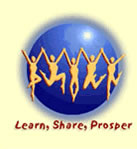Recommendations
Below you’ll find a wide variety of books, Web sites, and resources that support my “Boosting Business Performance” philosophy. Each link opens in a new window.
I hope you find these tips and resources useful! I value your questions, ideas, and comments, so please contact me any time to ask a question, contribute an idea, or make a suggestion. Enjoy!
Here’s to your business success,![]()
Adele Sommers, Ph.D.
Business performance specialist and award-winning author, educator, and speaker
Meetings and Decision Making
- Articles on effective meetings available in an extensive collection at EffectiveMeetings.com. This is an excellent archive of information on many aspects of managing meetings.
- Decision-making tools and guidebooks at GoalQPC.com. GoalQPC is a pioneer and leader in bringing many highly effective management and problem-solving tools to the attention of American industry.
Productivity and Effectiveness
- “Analyzing Performance Problems: Or You Really Oughta Wanna” 3rd edition by Robert F. Mager and Peter Pipe (available at Amazon.com). This is a highly enjoyable, easy-to-read classic by masters of human performance and instructional design.
- “First, Break All the Rules: What the World's Greatest Managers Do Differently” by Marcus Buckingham and Curt Coffman (available at Amazon.com). This savvy research duo from the Gallup Organization present their unprecedented findings of a massive, in-depth study of what makes great managers successful across a wide variety of industries and situations.
- “Now, Discover Your Strengths” by Marcus Buckingham and Donald O. Clifton (available at Amazon.com). Once again, researchers from the Gallup Organization present findings of a mammoth, 25-year study that identifies the 34 most prevalent human talents. The book helps individuals identify and develop their talents into strengths, and also helps managers nurture the talents of their personnel.
- “The E-Myth Revisited: Why Most Small Businesses Don't Work and What to Do About It,” second edition by Michael E. Gerber (available at Amazon.com). Using engaging stories and anecdotes, Gerber weaves a compelling argument that most people merely “buy a job” when starting their own companies. Owners often assume the familiar role of technician or manager instead of adopting the crucial new role of entrepreneur. Gerber’s advice is to learn to work on the business rather than in the business, primarily by systematizing each process so that all key tasks can be performed by others.
Project and Risk Management
- “Project Management Memory Jogger: A Pocket Guide for Project Teams” by Paula Martin and Karen Tate, available at Amazon.com. Ensure that your team’s projects are completed on time, within budget, and with exceptional results. An indispensable tool for employees at all levels of the organization, this pocket guide enables teams to prepare for, charter, execute, and close out successful projects.
- “The Deadline: A Novel about Project Management” by software expert Tom DeMarco (available at Amazon.com). This is a highly enjoyable example of “business fiction” that explains cutting edge project management techniques through a riveting plot filled with international intrigue.
- “Business @ the Speed of Stupid: How to Avoid Technology Disasters in Business” by Dan Burke and Alan Morrison (available at Amazon.com). Despite the lack of charm in the title, the book reveals in articulate detail how several project teams these two consultants witnessed or studied insisted on making major mistakes that resulted in painful failure.
- “Product Development for the Lean Enterprise: Why Toyota’s System Is Four Times More Productive and How You Can Implement It” by Michael Kennedy (available at Amazon.com). Another highly readable example of business fiction, this excellent book unveils, through a compelling story about a company in crisis, the secrets behind Toyota’s stellar success with product design. The lessons involved can be applied to many industries.
- “Critical Chain” by Eli Goldratt (available at Amazon.com). In another compelling business novel, Goldratt's story characters explore, debate, and discover why projects often run late and over budget, or fail to complete everything that was originally specified. The story line covers a variety of important issues including critical path vs. non-critical path tasks, resource conflicts, safety buffers, negotiating with subcontractors and suppliers, and the effects of early vs. late starts.
- Project Management Institute (PMI), a global professional organization of project management professionals from every major industry in over 125 countries. For more information, see pmi.org.
Product and Service Value
- “Necessary But Not Sufficient” by Eliyahu M. Goldratt, et al. (available at Amazon.com). Similar to Goldratt’s earlier novel, “The Goal,” this insightful and enjoyable example of business fiction examines in cliff-hanging detail a range of problems that result from excess complexity in software products. By examining these problems from both the vendor’s and the customers’ viewpoints, the book illustrates how over-complexity, especially in large systems, can quickly become a lose-lose proposition.
- “Paper Prototyping: A How-To Training Video,” by the Nielsen Norman Group, available here. This 32-minute video recorded in international DVD format explains, and gives a step-by-step demonstration of, everything you need to know to test mockups and prototypes of Web sites, software, devices, and hardware interfaces. The usability tests occur early in the design stage, before finalizing the system requirements.
- “Don’t Make Me Think: A Common Sense Approach to Web Usability,” second edition, by Steve Krug (availa). A practical Web design usability guide, this book is based on the author's empirical observation, not exhaustive statistics. Krug’s years of usability consulting and testing are distilled down to this thin, yet gem-filled guide book. The humorous, well-illustrated procedures show you step by step how to conduct your own usability tests in inexpensive ways.
- “Overpromise and Overdeliver: The Secrets of Unshakable Customer Loyalty” by Rick Barrera (available at Amazon.com). The author reveals his in-depth research and explains how an increasing number of product and service firms are developing lucrative, highly recognizable brands in record time. How? By making — and keeping — great promises to their customers.


